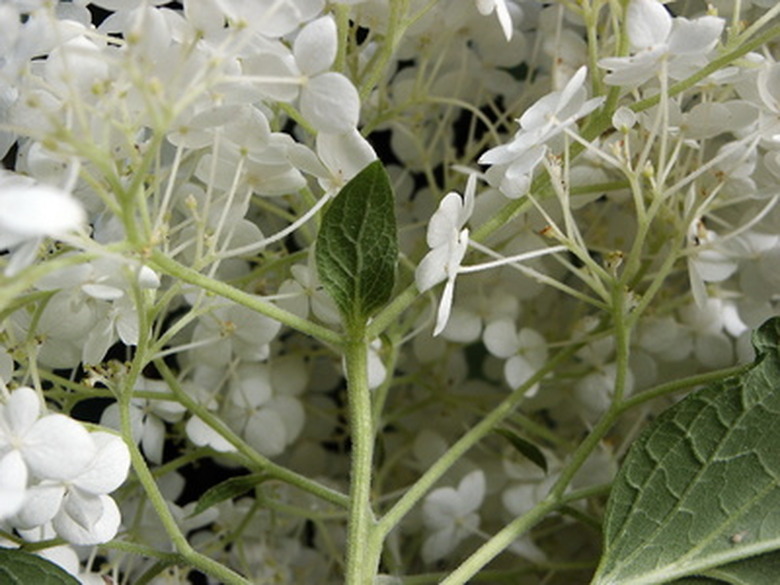How To Transplant Annabelle Hydrangeas
Annabelle hydrangea (Hydrangea arborescens) has some of the biggest flowers of all hydrangea varieties, with pinkish-white blooms appearing in early summer. Annabelle hydrangea has a pleasant, rounded shape, and generally reaches 3 to 5 feet at maturity. Annabelle hydrangea, often called "wild hydrangea," is a sturdy shrub that tolerates transplanting well. The ideal time to transplant is November or December, after the first frost but before the ground freezes hard.
Step 1
Water your Annabelle hydrangea two to three days before transplanting, unless the ground is already damp.
Step 2
Prepare the spot where you intend to move the Annabelle hydrangea ahead of time. Work the soil to a 15 to 18 inches and remove any rocks, large clods and weeds. Choose a spot with well-drained soil where the Annabelle hydrangea will be in sunlight at least six hours every day.
- Annabelle hydrangea (Hydrangea arborescens) has some of the biggest flowers of all hydrangea varieties, with pinkish-white blooms appearing in early summer.
- Annabelle hydrangea, often called "wild hydrangea," is a sturdy shrub that tolerates transplanting well.
Step 3
Dig a hole only as deep as the estimated size of the Annabelle hydrangea's root ball, and two to three times as wide. The size of the hole can be adjusted at planting time, but it's important to get the Annabelle hydrangea planted as soon as possible.
Step 4
Remove the Annabelle hydrangea from the ground. Using a shovel with a straight edge, dig a safe distance from the tree to protect as much of the root system as possible. As a general rule of thumb, the root ball will be approximately 12 inches wide for every inch of trunk diameter. Dig deep enough to get underneath the shrub's major roots, usually 14 to 24 inches.
Step 5
Lift the Annabelle hydrangea onto a plastic tarp. If the planting site is nearby, drag it to the site and plant it immediately. If it will be necessary to transport the Annabelle hydrangea, cover the root ball with damp burlap or peat moss, and keep it away from wind, hot sunlight, and temperature extremes. Never allow the hydrangea's root system to dry out.
- Dig a hole only as deep as the estimated size of the Annabelle hydrangea's root ball, and two to three times as wide.
- The size of the hole can be adjusted at planting time, but it's important to get the Annabelle hydrangea planted as soon as possible.
Step 6
Place the Annabelle hydrangea in the center of the hole. Be sure the crown, which is where the trunk meets the root system, is about 1 inch above the soil.
Step 7
Add reserved soil to the hole until the hole is half full, then tamp the soil down firmly around the roots, and fill the hole with water. Allow the water to drain, then finish filling the hole with soil.
Step 8
Spread 2 to 3 inches of organic mulch such as pine needles or shredded bark around the base of the Annabelle hydrangea, but leave an 8-inch margin around the trunk. Keep the soil moist for the first year after planting.
Things Needed
- Shovel
- Plastic tarp
- Garden hose
- Organic mulch
